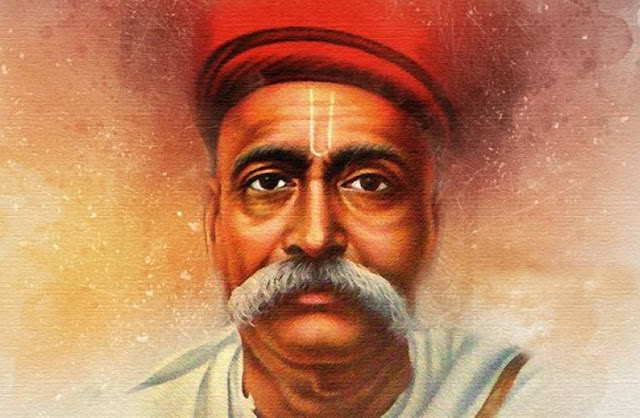This blog is a comprehensive and in-depth guide to the events, people and places throughout the history of India
Saturday, July 12, 2025
Adilabad Fort - Jahanpanah, Delhi
Thursday, July 10, 2025
Delhi Sultanate Quiz
Q.1 Which Delhi Sultanate ruler was killed in Battle?
(A) Ibrahim Lodi
(B) Razia Sultan
(C) Muḥammad bin Tughlaq
(D) Ghiyas-ud-din Tughlaq
Answer: A
Rajon ki Baoli- Lodi Era stepwell
Located in Mehrauli Archaeological Park in Delhi, Rajon ki Baoli is a four-tiered stepwell featuring elegant arched colonnades, ornate stucco medallions with floral and geometric patterns, and finely carved stone elements.
This baoli (reservoir) was built in the early years of 16th century during the rule of Lodi dynasty of Delhi Sultanate. With an area of 1,610 square meters, this Baoli descends to a depth of 13.4 meters, with the main tank measuring 23 by 10 meters at its base.
Rajon ki Baoli was recently restored by Archaeological Survey of India in collaboration with World Monuments Fund India (WMFI) and TCS (Tata Consultancy Services) Foundation.
Friday, July 4, 2025
How Buddhism Came to Tibet
In ancient times Tibet was not an isolated region as it is today. It lay in the much frequented route from China and Nepal. Buddhism was introduced to Tibet by Srong-tsan Gampo, one of the most illustrious kings of Tibet in the seventh century AD.
Gampo was married to Princesses Wen Cheng from China and another Princess Bhrikuti from Nepal. It was under the influence of his two wives that he was attracted to Buddhism. In China and Nepal Buddhism had already made its mark. Gampo is credited with introducing in Tibet Indian alphabets. This was the beginning of a new culture and civilisation in that land.
Many Buddhist from Tibet, as in the case of China, came to India. Buddhist monks from Tibet came to study at the universities of Nalanda, Vikramshila and Odantapuri. As a reciprocation, many Indian Buddhist visited Tibet. In the eighth century AD from Nalanda (a famous centre of learning in ancient Bihar) Buddhist monk Padmasambhava went to Tibet and succeeded in converting the land into Buddhism.
The Pala rulers of Bengal (Bihar was included in Bengal at that time) who were great patrons of Buddhism, contributed a lot to reform Buddhism in Tibet. Vajrayana (Vehicle of Thunderbolt) form of Buddhism was established in Tibet in the eleventh century AD as a result of missions sent from the Vajrayana monastery of Vikramshila in Bihar. Vajrayana is synonymous with Tantric Buddhism. Great Buddhist monk Atish Dipankar from Bengal, who visited Tibet in the 11th century during the reign of Nayapala, is still venerated there.
Many Buddhist works have been translated into Tibetan. Tanjur and Kanjur are the two classical Tibetan translations of Buddhist sacred texts .
Wednesday, July 2, 2025
Talagirishwara temple at Tamil Nadu's Panamalai
Talagirishwara temple at Panamalai in Villupuram district of Tamil Nadu was built by Pallava king Narasimhavarman II, popularly known as Rajasimha, who is also credited with commisioning the Shore Temple in Mahabalipuram, a UNESCO World Heritage site, and the Kailasanatha Temple in Kanchipuram.
Tuesday, July 1, 2025
Bimbisara: First Great Emperor of India
Magadha was one of the 16 great kingdoms or mahajanapadas in India between the 6th and 4th centuries BCE. Apart from Asmaka or Assaka, all the other fifteen mahajanpadas were located in Northern India. Assaka was located in what is now present-day territory comprising Andhra Pradesh, Telangana, and Maharashtra.
The most remarkable king of the Haryanka dynasty of the Magadhan kingdom in the 6th century BC was Bimbisara, also known as Srenika. He ascended the throne in c 545 B.C. He was the first Indian ruler who conceived the idea of an extensive empire.
He embarked on a policy of imperialism by conquering the little kingdom of Anga which had its capital at Champa near modern Bhagalpur in Bihar. In ancient times, the port city of Champa was of substantial commercial significance.
Though Anga was the only conquest of Bimbisara, he strengthened his position by matrimonial alliances with other kingdoms. His marriage with Kosala Devi, a sister of Prasenjit of Kosala kingdom, brought him the part of Kasi (Varanasi). He was also married to Chellana, the daughter of Chetaka, the Licchavis king of Vaishali. Chetaka was the brother of Trishala, mother of Mahavir (founder of Jainism). Another wife of Bimbisara was Khema who was born into the royal family of Madra in central Punjab.
Bimbisara's capital was Raajgriha, the modern Rajgir in the Nalanda district of Bihar. A contemporary of Buddha Bibmisara was his follower. He had offered Buddha and his followers his favourite park and pleasure garden, Veluvana (Bamboo Grove) in Rajgriha for their residence.
Bimbisara was in diplomatic contact with Pushkarasarin, the ruler of Gandhara, whose kingdom also included Taxila. One of the 16 great kingdoms or mahajanapadas, Gandhara region was in what is now northwestern Pakistan, corresponding to the Vale of Peshawar and valleys of Swat rivers.
Bimbisara was deposed, imprisoned and murdered by his son Ajatashatru in about 494 B.C.
Friday, June 27, 2025
The Rath Yatra At Jagannath Temple Begins in Puri Today
The Rath Yatra at famous Jagannath Temple began in Puri in Odisha today. This spectacular chariot festival (Rath Yatra) is celebrated for eight days at the temple. This revered annual event is held during Ashadh Shukla Paksha in the Hindu calendar month Asadh.
India Celebrates 169th Birth Anniversary of Bal Gangadhar Tilak
Bal Gangadhar Tilak Today India is celebrating the 169th birth anniversary of Bal Gangadhar Tilak, a leading light of Indian freedom struggl...

-
Books Authors Abhigyan Shakuntalam (Recognition of Shakuntala) Kalidasa Aihole ...
-
Aurangzeb, the last great Mughal emperor, died in 1707. Muhammad Shah became Mughal emperor in 1719. During the interregnum, Bahadur Shah I...
-
Amir-i-Chahalgani, known variously as Turkan-i-Chahalgani and Chalisa (The Forty), was a group of 40 faithful slaves which came into existen...








%20at%20Rajagriha,%20the%20visit%20of%20Bimbisara.jpg)



